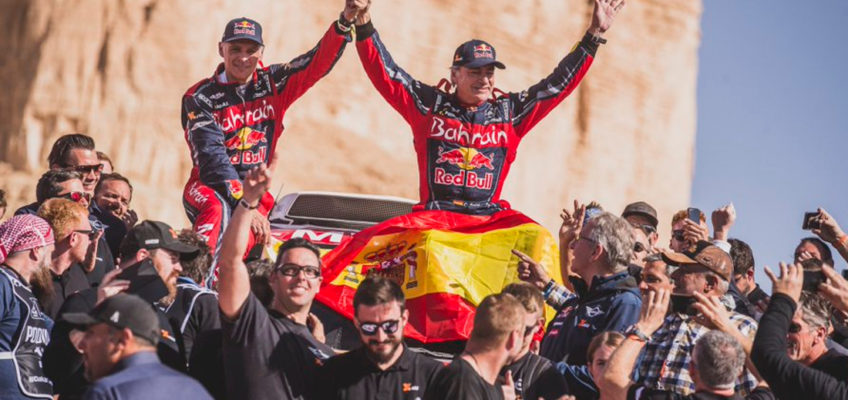42 hours, 59 minutes and 17 seconds. That is the total time that Carlos Sainz has needed to conquer his third (2010, 2018, 2020) Dakar Rally victory this Friday. The driver from Madrid has finished 6m21s clear of great favourite, Nasser Al-Attiyah and 9m58s ahead of Stephane Peterhansel.
Winning the hardest race in the world is a tremendous achievement in itself, but doing so at 57 years of age is only possible if you are a legend of motorsports such as the Spaniard from the X-Raid Team, who has made history with this result.
https://twitter.com/dakar/status/1218137641230749698
El Matador, as Carlos Sainz is fondly referred to, has extended by two years his very own record as the oldest ever driver to win a Dakar Rally. He set is the previous record, when he was 55 years of age, two seasons ago, in South America.
But his list of records does not end up there. The twice World Rally Champion remains the Spanish driver with the most Dakar Rally trophies in the car category. He has achieved his three victories with three different manufacturers: Volkswagen, Peugeot and now Mini. He is also the third driver with the most Dakar stage wins behind Ari Vatananen and Stéphane Peterhansel.
The key to Carlos Sainz´ success
The performance of El Matador and his co-pilot Lucas Cruz has been simply sensational throughout the rally. A brilliant and highly efficient duo, the teammates have displayed a very high level of consistency and regularity right from the start of the race. They have in fact come in the top 5 in every stage but two, the 2nd and the 8th. And all of this while sustaining a winning pace from beginning to end.
https://twitter.com/CSainz_oficial/status/1218096974236463104
Those have been the keys to a victory which initially seemed just like a dream, given the theoretical superiority of the Hilux V8 4×4 of Nasser Al-Attiyah. Besides, the Spaniards also had to face a yet greater disadvantage; competing in their rivals’ backyard. An essential part of the race took place amongst the desert dunes, home and habitat of the Qatari champion.
Two decisive moments
From the first special, when Carlos Sainz and Lucas Cruz finished third, they have regularly climbed up the podium. On the third day, the pair got their first victory, which took them to the lead of the standings, a position which was going to be theirs to keep until the end. In total the Spanish couple has taken four triumphs, one second position, three third positions, two fifth positions, one sixth and one fifteenth position.
https://twitter.com/dakar/status/1218228993184239617
On the fifth stage, the Spaniard couple had to come out first after the bikes abstained from competing in mourn for the death of Paulo Goncalves. With no references to follow on the sand, they ended up losing a lot of time. It was the worst day of the raid for them but, in any case, they managed to keep a cool head and retain the leadership.
Another decisive moment for them came during the ninth special where one of their very few navigation mistakes had their advantage shrink from 8 minutes to 24 seconds. The champions compensated by taking the following stage and increasing their lead by 18 minutes.
The Mini, a machine perfected by Sainz himself
Together with the outstanding job of his loyal co-pilot, Lucas Cruz, with whom he has won his three Dakar trophies, the performance of his car has been crucial to reach the glory. The development process of the Mini started a year ago, at the end of the previous edition of the Dakar when Sainz was determined to take a leading role in solving the many shortcomings that the car had displayed during the rally.
https://twitter.com/dakar/status/1218075435302637568
Sainz himself has driven thousands of testing kilometres so as to work hand in hand with the engineers on what and how to make the necessary changes. Besides the improvements in the breaking and suspension mechanisms, a modification that has proven crucial has been inflating and deflecting system. He also had the front of the car shortened by twelve centimetres so as to better tackle the dunes.
Images: Carlos Sainz Twitter.





Leave a Reply